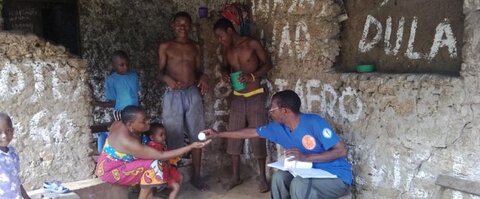The top five investments we should be making to tackle NTDs

An Lancet Public Health Blog article by LCNTDR's Professor Sir Roy Anderson and Alison Bettis
Neglected tropical diseases (NTDs) are a group of infectious diseases that affect more than 1 billion people worldwide, causing disability, disfigurement, social exclusion, and death. To tackle this global problem, an international partnership of governments, the WHO, the pharmaceutical industry, philanthropic donors, non-governmental organisations, and the research community was formed in 2012 in London. This collaboration sought to pool resources and expertise to meet an ambitious target of controlling and, where possible, eliminating NTDs by 2020. Five years on, the NTD community reconvenes this week in Geneva to review their efforts and renew their commitments to realise the 2020 targets.
What will be evident from this review is that great advances have been made both in terms of the engagement of endemic countries to tackle these diseases but also in the free availability of drugs to treat them. For example, based on the latest WHO data, in the past 5 years, the number of people at risk of NTDs fell by 20% – from 2 billion to 1.6 billion. Analysis of this investment in NTD control shows that it is an extremely cost-effective intervention that improves the lives of millions. Building on this progress, we now have an incredible opportunity to eliminate many of these ancient diseases, lifting communities out of poverty and securing benefits for generations to come.
While these advances are very promising, it is vital that interest and funding be maintained on the global scale in order to continue progressing towards the control, and eventually elimination, of NTDs. Findings from the recently launched WHO NTD progress report show that 330 million people in sub-Saharan Africa could be covered by new investments of US$150 million per year to the year 2020. As such, one of the desired outcomes of the Geneva summit is to encourage and identify ongoing support to fill funding and capacity gaps. Ways in which current and future funding is invested will shape the success of the international efforts to control and eliminate these debilitating diseases. The following are investments worth making.
1 - Research & innovation – Ongoing scientific and operational research activities are crucial to improving our tools and methods for NTD control. Investing in research can yield faster and more sensitive diagnostics, improved strategies for treatment and control, new and more efficient uses of technology for data collection, and much more. Challenges to NTD control are always shifting, and strong investment in research means that the NTD community can innovate and adapt to this forever-changing environment.
2 - Capacity building – In many endemic countries, the capacity of public health professionals is hindered by a lack of resources. This may result in a lack of necessary equipment, a shortage of workers, or inadequate training opportunities, all of which pose additional challenges to NTD control programmes. It is imperative that partnerships between endemic and non-endemic country institutions engage in training and knowledge exchange, to further build the capacity of health workers. Continuing to invest in public health professionals in endemic areas can have an enormous impact, and is important as government health systems take ownership of their disease control programmes.
3 - Consistent monitoring and evaluation/surveillance – In order to effectively and efficiently treat NTDs, we have to know where infection is present. Regular surveillance activities in endemic areas can provide an accurate picture of where the diseases are (geographical location) as well as who is most likely to be infected (eg, different age groups, certain occupations with high risk factors). It is also vital to keep track of progress as treatment programmes continue, to understand the impact of interventions as well as tracking potential problems (such as any development of drug resistance). Investment in quality, regular surveillance is important on the local and international scale, and can also be a source of useful data for research activities.
4 - Integration – A recent priority for many governments is the integration of NTD control programmes with other development initiatives. Research shows that combining treatment efforts for the same population (eg, deworming, water and sanitation facilities, and school feeding in schools) is much more efficient than conducting these initiatives separately. This concept can also be applied in the context of funding, where overlapping priorities could be seen as an opportunity for joint investment between sectors (eg, education and deworming in schools, or poverty reduction/microfinance and disease case management). Collective investment can greatly increase impact while decreasing costs to each individual donor.
5 - Logistical support for drug delivery - Drugs can often be obtained for free in poor countries, but the logistics of delivery to remote areas is often costly and beyond the means of some governments and certainly poor communities in endemic areas. Support is needed in many regions of the world to provide the logistics of drug delivery to people in need.
Prioritising funding for these areas is an excellent return on investment in public health, and will have a very positive impact on the lives of millions of people. And while increased funding for NTDs will be helpful in the short term, sustained interest in funding these activities in the long term is vital if we are to realise the very achievable goal of protecting communities worldwide from the suffering caused by these diseases.
This article originally published on The Lancet Public Health Blog